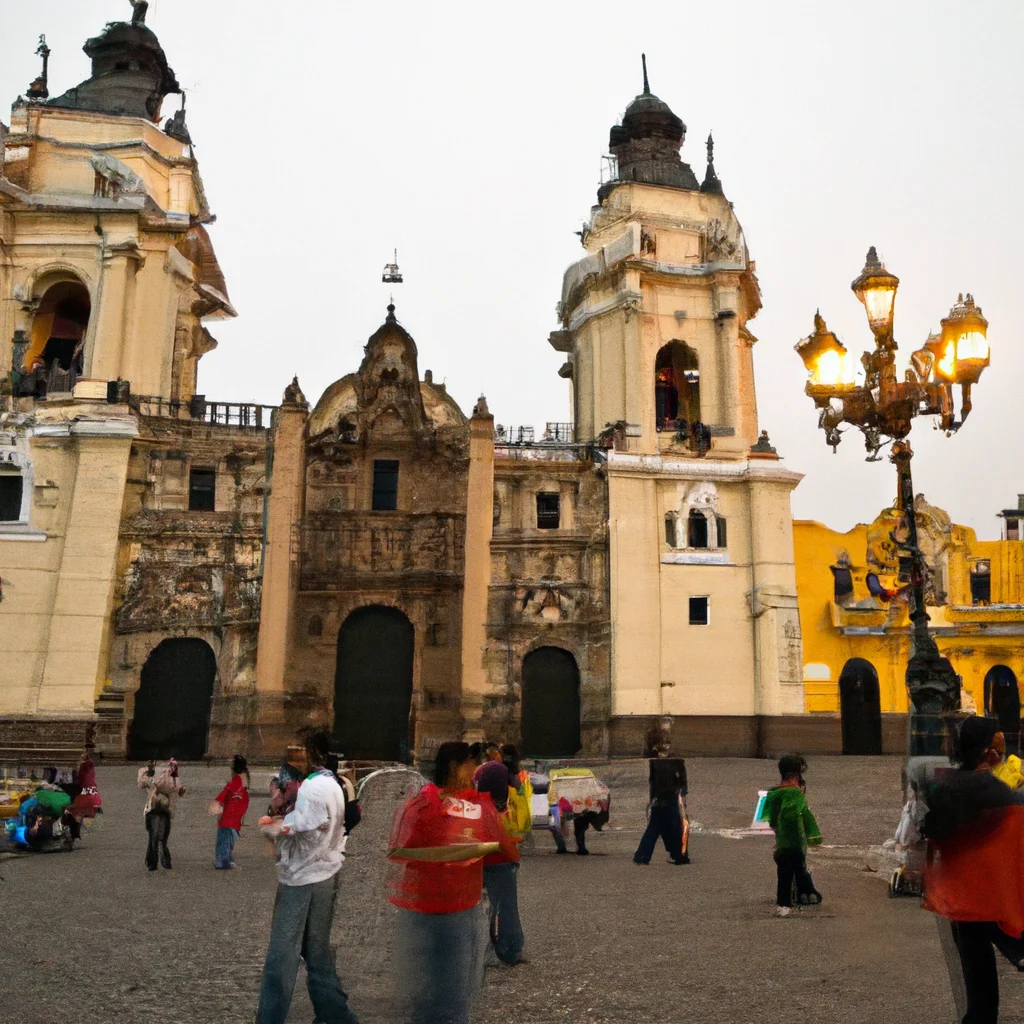The Lima Cathedral, officially known as the Cathedral of Saint John the Apostle, stands as a monumental symbol of Peru’s rich history and spiritual heritage. Located in the heart of Lima’s historic center, this architectural masterpiece not only serves as a place of worship but also encapsulates centuries of faith, culture, and artistry. In this article, we will delve deep into the various aspects of the Lima Cathedral, exploring its architecture, historical significance, and the role it plays in contemporary Peru.
Historical Background of Lima Cathedral
The foundation of the Lima Cathedral was laid in 1535, shortly after the establishment of Lima by Spanish conquistador Francisco Pizarro. The construction of this grand structure spanned several decades, with its completion occurring in the late 18th century. Built in a time when the Catholic Church was a dominant force in society, the cathedral was intended to reflect the power and influence of the Church in the New World.
The cathedral has undergone various renovations and restorations due to natural disasters, particularly earthquakes. The most significant reconstruction took place after the devastating earthquake of 1746, which caused extensive damage to the original structure. Despite these challenges, the Lima Cathedral has maintained its status as a pivotal religious site and a key historical landmark.
Architectural Significance
Design and Style
The architectural design of the Lima Cathedral is a brilliant amalgamation of various styles, predominantly reflecting Renaissance and Baroque elements. The façade, with its intricate details and towering bell towers, is characteristic of the Spanish colonial style. The use of local materials such as lime and adobe in construction demonstrates the adaptation of European architectural styles to the available resources in Peru.
Internally, the cathedral features a stunning array of chapels, altars, and religious artworks. The main altar is a focal point, adorned with ornate carvings and sculptures that showcase the artistic prowess of the colonial period. The interplay of light within the cathedral, particularly from its stained glass windows, adds a spiritual dimension to the overall experience of visiting the cathedral.
Notable Features
One cannot discuss Lima Cathedral without mentioning its impressive choir stalls, crafted from fine cedar wood. These stalls are exemplary of the craftsmanship of the era and are intricately carved with religious motifs. Additionally, the cathedral houses the tomb of Francisco Pizarro, the founder of Lima, which underscores the historical significance of the site.
Moreover, the cathedral’s bell towers, which rise majestically above the Plaza Mayor, provide a striking visual landmark that can be seen from various points in the city. The bells themselves have a rich history, calling the faithful to worship while also marking important civic events throughout Lima’s history.
The Role of Lima Cathedral Today
In modern times, the Lima Cathedral continues to function as an active parish church, hosting numerous services, weddings, and special events. It remains a central place of worship for many Lima residents and a significant site for pilgrims and tourists alike. The cathedral also plays an important role in preserving the cultural heritage of the city, serving as a venue for concerts, art exhibitions, and community gatherings.
Religious Significance
The Lima Cathedral is not only a historical monument but also a vital component of the spiritual life of Lima. It is the seat of the Archbishop of Lima, making it one of the most important religious institutions in Peru. Special liturgical celebrations, such as Holy Week and Christmas, draw large congregations, reflecting the deep-rooted Catholic traditions of the country.
Tourism and Cultural Impact
As a UNESCO World Heritage site, the Lima Cathedral attracts thousands of visitors each year. Tourists often come to admire its architectural beauty, learn about its history, and appreciate the art within its walls. Guided tours are available, providing insights into the cathedral’s significance and the stories that have unfolded over its long history.
Visiting Lima Cathedral
Visitor Information
The Lima Cathedral is open to the public, with specific hours for visits and services. Visitors are encouraged to check the official website or local tourism information for the latest updates on visiting hours and any special events or services that may be taking place during their visit.
Accessibility
Situated in the bustling Plaza Mayor, the Lima Cathedral is easily accessible by public transport. The surrounding area is rich in other historical sites, making it an ideal location for those interested in exploring Lima’s cultural heritage.
How to Book on Viator
For those looking to enhance their visit, we recommend booking guided tours that include the Lima Cathedral. These tours often provide valuable context and insights that enrich the experience. To book a tour, visit Viator.
Disclaimer: This information is accurate to the best of our knowledge; however, there may be changes or mistakes. Please verify exact details on the Viator booking page.
Cultural Events and Celebrations
The Lima Cathedral serves as a backdrop for various cultural events throughout the year. These events often highlight the rich traditions of Peru, combining religious practices with local customs. Festivals such as the Fiesta de la Virgen de la Candelaria showcase vibrant displays of music, dance, and art, drawing both locals and tourists into the celebrations.
Conclusion
In summary, the Lima Cathedral stands as a testament to the enduring legacy of faith and history in Peru. Its architectural grandeur, historical significance, and active role in contemporary religious life make it a must-visit destination for anyone interested in the cultural tapestry of Lima. As we reflect on the importance of this monumental structure, we recognize its role in shaping the identity of the city and its people. For more insights into travel and culture, visit Unisho.

